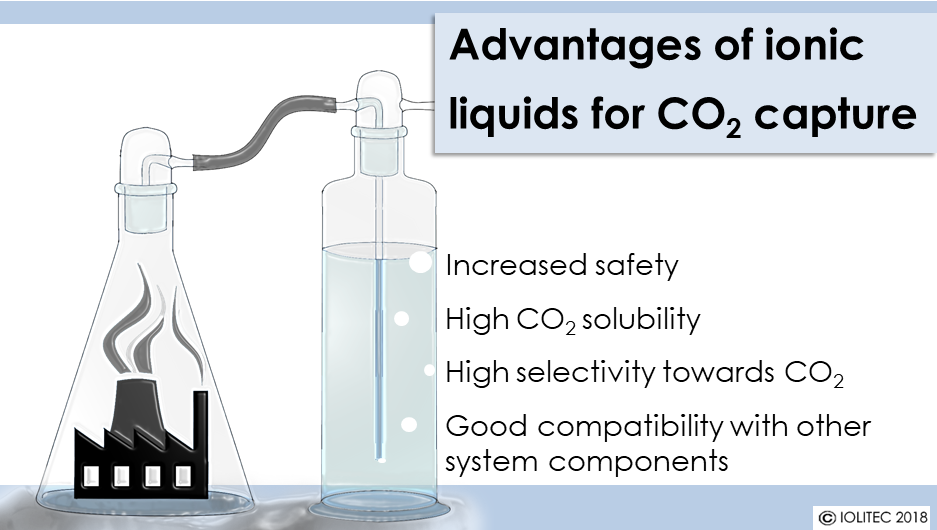
Alarmingly fast rising levels of atmospheric CO2 are thought to be responsible for greenhouse effect and global temperature rise. And while the energy and transportation sectors rely heavily on fossil resources, together with ever-growing energy demand, the CO2 release into the environment is going to rise. Therefore, the effective methods for CO2 capture from power plant flue gas, storage and further use are needed. Currently to achieve that, the CO2-containing gas mixture is treated with the solution in which CO2 is captured. Then, it is transported to the storage or use destination and CO2 is released by heating the mixture or releasing the pressure for high-pressure physically absorbed gas. Amine solutions are typically used as absorbing media, but currently more efficient systems are needed.
Ionic liquids can provide a good alternative to traditional amine solutions, due to unique combination of properties that they possess:
- negligible vapour pressure, which minimizes losses during thermal release of CO2 and minimize atmospheric contamination by absorbent;
- minimal flammability;
- high solubility of CO2, in particular high physical absorption levels;
- easily tuneable structure, which can be optimized for effective chemical absorption;
- thermal and chemical stability, allowing to reduce decomposition loss during thermal CO2 release.
In addition to that, some ionic liquid also can bring an advantage of:
- high selectivity towards CO2;
- ability to promote reactions of dissolved CO2;
- anti-corrosion properties;
- low toxicity.
To mitigate high viscosity – the main challenge associated with the use of ILs – binary mixtures of functionalized and non-functionalized ILs, ILs and water or ternary IL-water-amine mixtures can be employed.
If you are interested in CO2 capture, need advice picking right candidates or optimization of the structures of ILs, IOLITEC with its extended library of ILs and experience would be happy to help you. Please don’t hesitate to contact us.
Text and illustration: Dr. Svetlana Cadu, 2018
